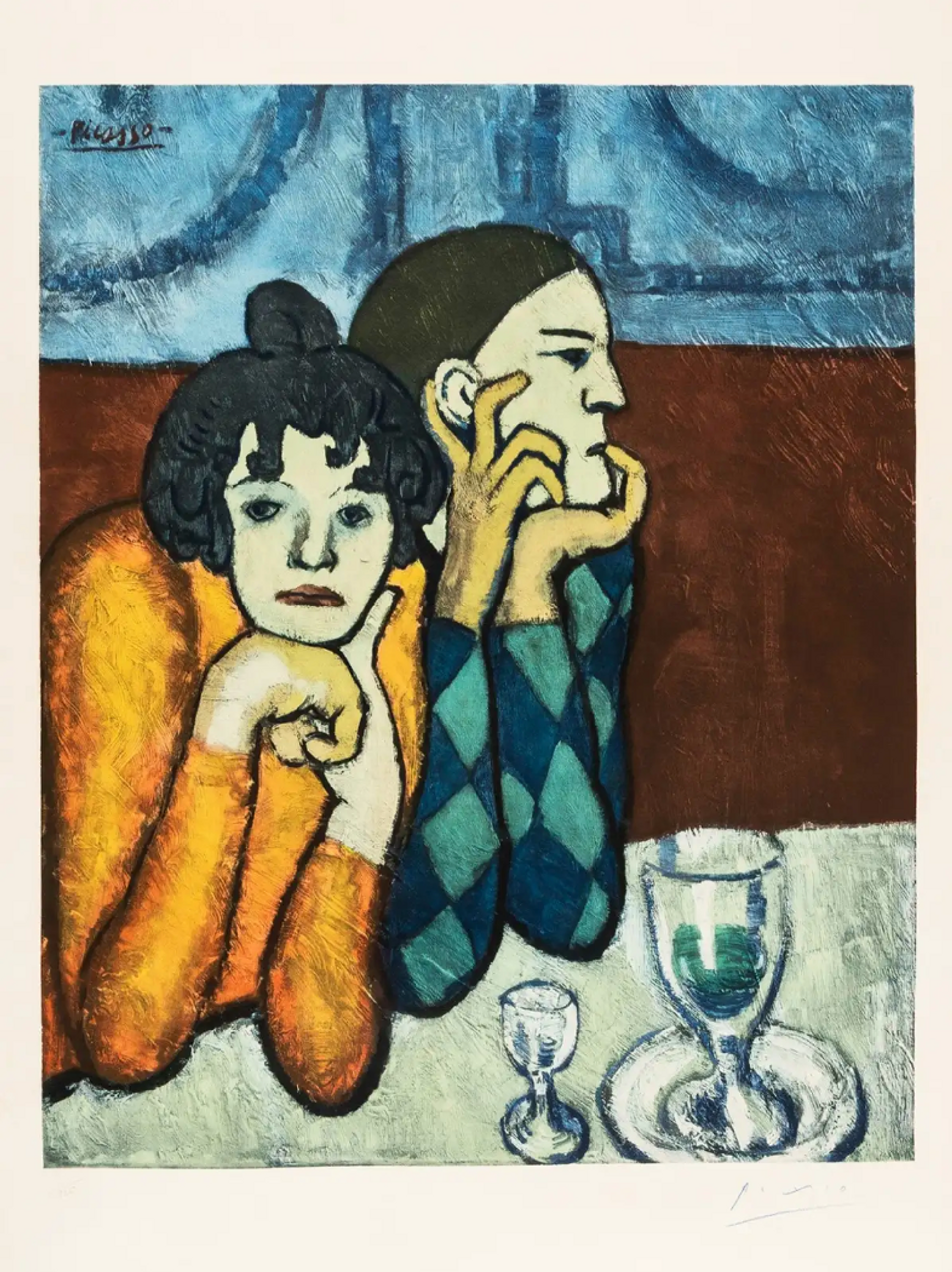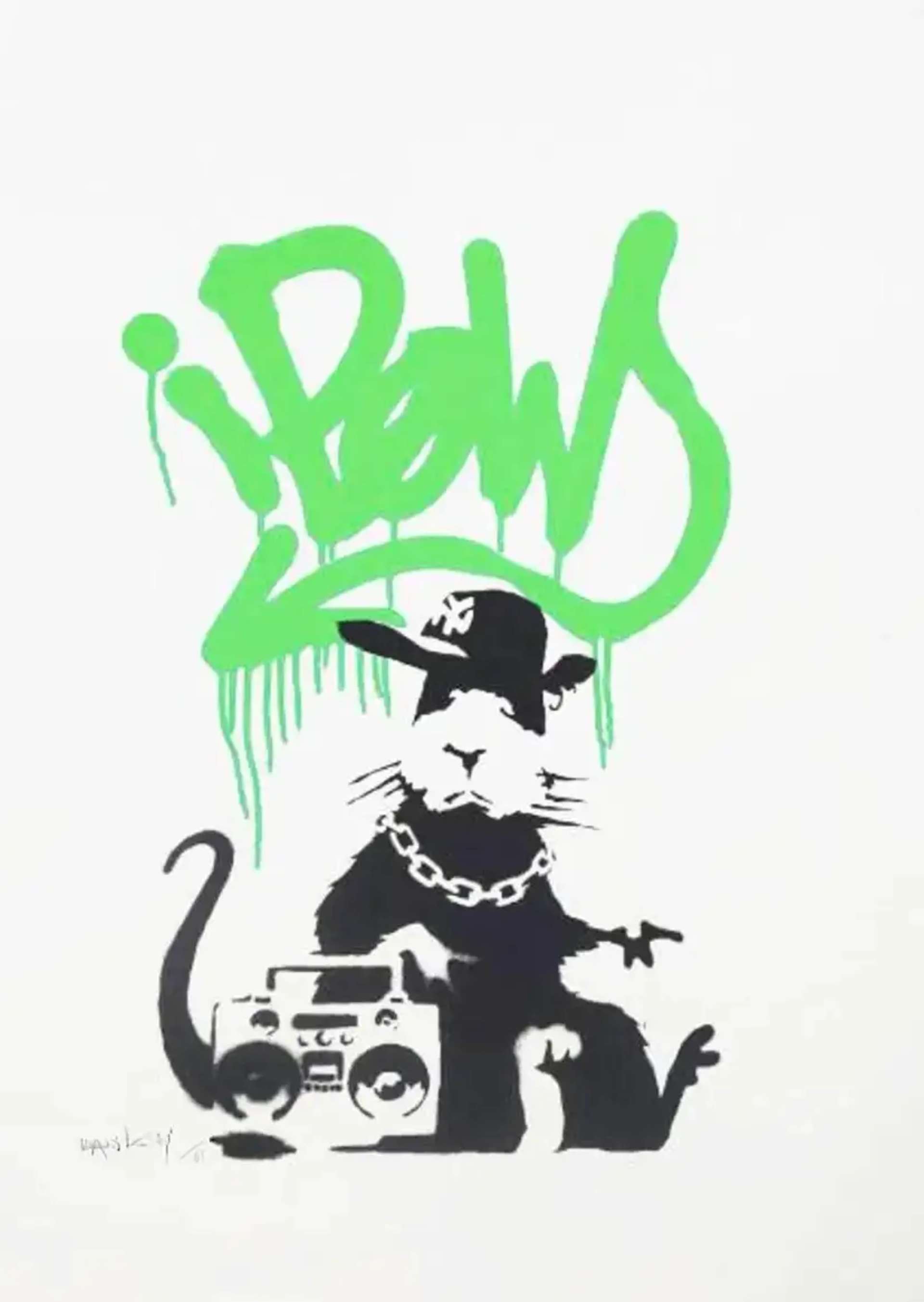Pablo Picasso's Political Art

 Colombe Volant À L'Arc-En-Ciel © Pablo Picasso 1952
Colombe Volant À L'Arc-En-Ciel © Pablo Picasso 1952
Interested in buying or selling
Pablo Picasso?

Pablo Picasso
160 works
Pablo Picasso is a name that resonates with many as one of the most influential and renowned artists of the 20th century. Known for his diverse and innovative styles, Picasso's work is often associated with the development of modern art. His contributions to political art have recently begun to be re-examined, especially their significance in shaping public opinion and raising awareness about pressing issues of his time. In this article, we explore Picasso's anti-war and anti-fascist works, providing historical context and analysis, and examining their impact on contemporary art and activism.
Picasso's Most Iconic Anti-War Work: The Spanish Civil War and Guernica
During the Spanish Civil War, Picasso was deeply affected by the ongoing conflict and the horrors that unfolded in his native country. He felt a strong connection to his homeland and the suffering of its people. In response to the conflict, he created one of his most famous works, Guernica. This large-scale mural, created in 1937, depicts the terror and chaos following the bombing of the Basque town of Guernica by Nazi German and Italian Fascist air forces in support of Francisco Franco's Nationalist forces. Earlier that year, Picasso had been commissioned by the Spanish Republic to create a work for Spain’s pavilion at the Paris World’s Fair, and the artist is said to have been in a creative rut before the event – the bombing finally provided him with inspiration.
Guernica is a powerful and poignant representation of the atrocities of war, showcasing its devastating impact on innocent civilians. The painting is done in a monochromatic palette, adding to its sombre and haunting atmosphere, while Picasso's cubist style conveys a sense of disorientation and fragmentation, illustrating the broken lives and shattered communities as a result of war. It features strong imagery – including a horse, a powerful symbol in Spanish culture, shown in agony and a mother holding her dead child, reminiscent of the Christian pietà. Guernica is often interpreted as referencing key elements and narrative devices found in classic historical paintings.
 Guernica © Pablo Picasso 1937
Guernica © Pablo Picasso 1937Picasso wanted the painting to remain in Spain, but a few years after its completion Franco was successful in gaining power and establishing a dictatorship. This began the painting’s long history of travelling in exile, with Picasso exclaiming that “the painting will be turned over to the government of the Spanish Republic the day the Republic is restored in Spain.” Franco outlived Picasso for a few years, and neither the artist nor the painting ever returned to Spain during his lifetime, with the work being on long-term loan to the Museum of Modern Art in New York City. Eventually, the painting was repatriated in 1981, where it remains on display at the Museo Reina Sofia in Madrid. As a significant piece of anti-war art, Guernica has become synonymous with the history of art, particularly in the context of art and war.
 The Charnel House © Pablo Picasso 1944-45
The Charnel House © Pablo Picasso 1944-45Picasso's Response to the Rise of Fascism in Europe
As fascism became popular throughout Europe in the 1930s and 1940s, Picasso became increasingly engaged in anti-fascist activism. He joined the French Communist Party in 1944 and remained a member until his death, believing that it would fight against the spread of fascism and promote social justice. He saw this activism as “the logical consequence of my whole life, of my whole work.” Months before the bombing of Guernica Picasso created his first overtly political work, The Dream And Lie Of Franco, a collection of two sets of prints, totaling 18 separate illustrations, paired with a related prose poem. The images form a narrative in comic book-like shape, and the dictator’s form shifts in each stage, as he is shown destroying traditional aspects of Spanish life and culture such as bull-running and flamenco dancing.
Picasso further created numerous political works during this period, using this celebrity status to expose the brutality of fascist regimes and rally support for the anti-fascist cause. One such work is The Charnel House, a painting that is often seen as a companion piece to Guernica. Created in 1944-45, it depicts the aftermath of a fascist massacre, with dismembered bodies piled together in a gruesome scene. Like Guernica, this piece employs a monochromatic palette and cubist style to emphasise the horror and dehumanisation of war. The painting is another clear example of Picasso's anti-fascist art, as it provides a visual commentary on the atrocities committed by fascist regimes.
Starting in 1949, Picasso created a series of artworks featuring the dove – an internationally notable symbol of peace; the very first one was chosen as the emblem for the First International Peace Conference in Paris. Others followed, and he later developed the dove into a very simple line drawing of the bird that would become one of his most recognised symbols and motifs, used in many more Peace Conferences until the artist’s death. He remained a committed anti-fascist and pacifist until the end of his life.
 Hope © Shepherd Fairey 2008
Hope © Shepherd Fairey 2008Art and Politics: The Power of Political Statements in Art
Picasso's politically charged works serve as a testament to the power of art as a medium for conveying political messages and inciting change. His paintings not only raised awareness about the horrors of war and the dangers of fascism but also stirred emotions and galvanised action among those who encountered them. In an era before social media and instant global communication, Picasso's art played a crucial role in shaping public opinion and mobilising support for political causes. Picasso's Guernica has transcended its original context to become a universal symbol of the horrors of war, making it a powerful tool for anti-war movements and peace activists around the world. In this way, art transcends cultural and geographical boundaries, uniting people around shared values and ideals.
In examining the history of art, it becomes evident that Picasso was not alone in using his artistic talents to make political statements. Throughout the ages, artists have employed their skills to comment on the socio-political issues of their time. From the Renaissance to modern art, the intersection of art and politics has been a driving force in the evolution of artistic expression, serving as both a tool of propaganda and a means of resistance. From the murals of Diego Rivera that championed socialist ideals to the bold graphics of Shepard Fairey's Hope poster for Barack Obama's presidential campaign, the visual language of art has been instrumental in communicating political messages and rallying support for various causes.
While art can serve as a force for good, promoting social justice and challenging oppressive regimes, it can also be used by those in power to advance their own agendas. Throughout history, authoritarian governments have used art as propaganda, manipulating artistic expression to control public opinion and maintain their grip on power. Even Franco tried to use Guernica as a means of promoting national identity. It is essential to recognise the dual nature of art in society, as both a tool for liberation and a potential instrument of oppression. By examining the various ways in which art has been used for political purposes, we can gain a deeper understanding of the complex relationship between art and power.




